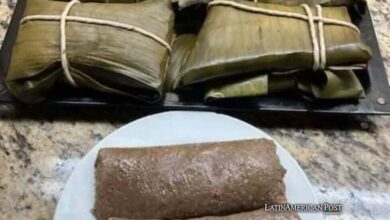Spain Asserts Ownership of Quimbaya Treasure Amid Colombia’s Legal Recovery Efforts

Spain maintains unwavering ownership of the Quimbaya Treasure, dismissing Colombia’s legal and diplomatic efforts to reclaim the pre-Columbian artifacts donated to Queen María Cristina in 1893. Amidst an international debate on colonial-era art repatriation, both nations stand at a crossroads over the fate of 122 golden pieces, symbolizing cultural heritage and historical legacies intertwined with colonial conquests.
Unveiling the Quimbaya Treasure: A Complex Tapestry of History and Ownership
In the heart of Madrid’s Museo de América lies a collection that has become a focal point of international cultural diplomacy and legal contention: the Quimbaya Treasure. Comprising 122 exquisite pieces of pre-Columbian goldwork, this collection encapsulates a complex narrative of colonial history, national identity, and the ongoing debate over the repatriation of cultural artifacts. Spain’s steadfast assertion of ownership over the Quimbaya Treasure challenges Colombia’s persistent efforts to reclaim these artifacts, underscoring a broader dialogue on the fate of colonial-era treasures dispersed around the globe.
The journey of the Quimbaya Treasure to Spain began with a gesture of gratitude in 1892 when Colombian President Carlos Holguín Mallarino donated the collection to Queen María Cristina. This act, intended to thank the Spanish Crown for its support during a border dispute with Venezuela, permanently relocated a significant portion of Colombia’s precolonial heritage to European soil. The treasure, discovered in 1890 in Filandia, Quindío, offers a rare glimpse into the craftsmanship of the Quimbaya civilization. This culture thrived in central Colombia before being decimated during the Spanish Conquest in the 17th century.
The Spanish government articulated a clear stance in response to inquiries from members of Spain’s conservative Partido Popular. There are “no doubts” regarding the legal acquisition and Spanish ownership of the Quimbaya Treasure. According to Spanish authorities, this position is rooted in the artifacts’ uninterrupted presence within the state collections since their donation in 1893, which legitimizes their claim over the treasure. The government, led by the progressive coalition, has also acknowledged the global discourse on the restitution of colonial-era artifacts, indicating a willingness to engage in discussions that transcend traditional perspectives on heritage and ownership.
Colombia’s Pursuit of Heritage: A Multifaceted Campaign
Contrasting with Spain’s legal and historical assertions, the Colombian government has embarked on a multifaceted campaign to secure the return of the Quimbaya Treasure. Citing cultural and national significance, Colombian officials have explored avenues ranging from diplomatic dialogue to legal action. The treasure, emblematic of Colombia’s rich precolonial history, is seen as a collection of objects and an integral part of the nation’s soul, deserving of return to its ancestral land.
The dispute over the Quimbaya Treasure encapsulates a broader ethical debate on repatriating cultural artifacts. This discourse challenges the notion of ownership in the context of historical injustices and colonial exploitation. The Spanish government’s recent initiatives to foster “spaces of dialogue and exchange” aim to address the colonial legacy within state museums, reflecting a growing recognition of the need for a more inclusive and equitable approach to understanding and curating cultural heritage.
The Quimbaya Treasure’s repatriation efforts are emblematic of a global movement advocating for returning cultural artifacts to their countries of origin. Nations worldwide are increasingly calling for reconsidering colonial-era acquisitions, urging the reevaluation of historical narratives and the restitution of cultural sovereignty. As Spain and Colombia navigate this diplomatic impasse, their dialogue shapes international norms and practices regarding cultural repatriation.
Cultural Repatriation: A Growing Global Movement
The Quimbaya Treasure, with its intricate goldwork reflecting the sophisticated metallurgical techniques of the Quimbaya people, serves as a poignant reminder of a civilization that once flourished in the heart of Colombia. Beyond their aesthetic and material value, the artifacts embody the resilience and ingenuity of indigenous cultures in the face of conquest and colonization. For Colombia, the treasure’s return symbolizes restoring historical continuity and celebrating indigenous heritage that has survived despite centuries of suppression.
As the debate over the Quimbaya Treasure continues, the path forward requires a delicate balance between legal frameworks, historical accountability, and ethical considerations. The resolution of this dispute, whether through diplomatic negotiation or legal adjudication, will set a precedent for similar cases worldwide. It allows Spain and Colombia to lead by example, demonstrating that reconciliation and mutual respect can prevail over historical divisions.
Transcending Contestations: Profound Questions of Identity and Responsibility
The ongoing dialogue surrounding the Quimbaya Treasure transcends the immediate legal and diplomatic contestations, touching upon more profound questions of cultural identity, historical responsibility, and the power dynamics of post-colonial relationships. As nations increasingly advocate for the repatriation of cultural artifacts, resolving such disputes will require a concerted effort to acknowledge historical injustices, celebrate shared heritage, and foster an international culture of cooperation and understanding.
Also read: Peru Welcomes Back Cultural Treasures from Global Repatriation Effort
In this context, the Quimbaya Treasure stands not only as a collection of pre-Columbian artifacts but as a beacon for a more inclusive and respectful approach to managing and interpreting the world’s cultural legacies. The journey of these artifacts—whether they remain in Madrid or return to Colombian soil—will continue to inspire and inform the global conversation on cultural heritage, sovereignty, and the paths toward healing the wounds of history.




